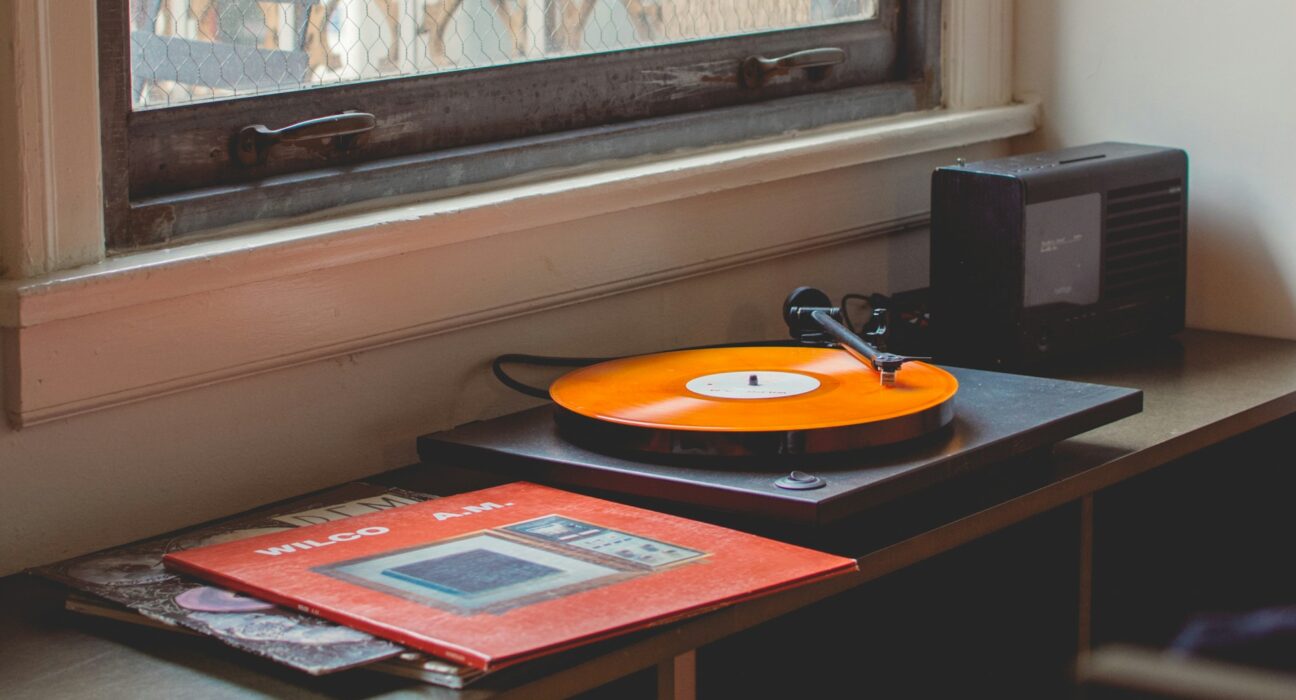The gentle crackle of a record needle finding its groove. The anticipation as the first notes emerge from vintage speakers. The wide-eyed wonder of a child experiencing music as a physical, tangible experience rather than just another digital stream. These moments capture something profound about sharing music with our children through vinyl records.
Hosting vinyl listening parties with your kids offers more than just entertainment. It creates opportunities for genuine music bonding while introducing them to an analog lifestyle that values patience, intentionality, and the art of active listening. Unlike the instant gratification of streaming services, vinyl demands presence. You select an album, place it carefully on the turntable, and commit to experiencing it from start to finish.
This retro parenting approach doesn’t require you to abandon modern conveniences entirely. Instead, it adds depth to your family’s relationship with music while teaching valuable lessons about slowing down and appreciating craftsmanship. Whether you’re dusting off your old collection or starting fresh, vinyl listening parties can become treasured family traditions that span generations.
Creating the Perfect Listening Environment
Setting Up Your Space
Transform any room into a dedicated listening sanctuary. Clear a comfortable area where everyone can sit together without distractions. Soft lighting from table lamps creates warmth, while turning off phones and tablets eliminates competing stimuli. The goal is to create an atmosphere where music becomes the primary focus.
Position your turntable at a height where children can observe the mechanics safely. Explain how the stylus tracks the grooves, how album artwork tells stories, and why handling records requires gentle care. This hands-on education becomes part of the analog lifestyle experience.
Essential Equipment for Family Sessions
You don’t need audiophile-grade equipment to enjoy meaningful listening experiences. A basic turntable, amplifier, and decent speakers provide everything necessary for music bonding sessions. Consider child-friendly features like dust covers and sturdy construction that can withstand curious hands.
Invest in a record cleaning kit and demonstrate proper maintenance techniques. Teaching children to care for vinyl records instills responsibility while protecting your collection. Make cleaning records part of the ritual, showing how preparation enhances the listening experience.
Age-Appropriate Album Selection Strategies
Building a Family-Friendly Collection
Start with albums that offer universal appeal across different age groups. Classic rock, folk, jazz, and world music often contain rich instrumentation that showcases vinyl’s warmth and depth. Avoid albums with explicit content, but don’t shy away from introducing sophisticated musical concepts through age-appropriate selections.
Consider the attention spans of your youngest listeners when choosing albums. Some children thrive with full album experiences, while others benefit from sampling individual tracks before committing to longer sessions. Let their engagement levels guide your approach to this retro parenting method.
Educational Value in Music Selection
Use album selection as an opportunity to explore different cultures, historical periods, and musical styles. A Beatles album might spark conversations about the 1960s, while traditional folk recordings can introduce children to different cultures and instruments. This approach transforms listening parties into informal educational experiences.
Encourage children to participate in selection processes. Let them browse album covers, read liner notes, and make choices based on artwork or song titles. This involvement deepens their investment in the analog lifestyle while developing their decision-making skills.
Interactive Activities During Listening Sessions
Engaging Multiple Senses
Encourage children to follow along with lyric sheets or liner notes when available. Many vinyl releases include detailed information about recording sessions, musician credits, and song meanings. Reading together while listening develops multisensory engagement with music.
Provide drawing materials for children to create artwork inspired by what they hear. Abstract drawings, character sketches, or scene illustrations help process musical emotions visually. These creative responses become lasting mementos of your music bonding experiences.
Movement and Physical Response
Allow natural physical responses to music through dancing, clapping, or gentle movement. Vinyl’s longer format encourages sustained engagement rather than quick switches between songs. Children learn to inhabit musical spaces more fully, developing a deeper appreciation for artistic expression.
Create simple games around musical elements like identifying instruments, counting verses, or predicting song structures. These activities maintain engagement while building musical literacy through this retro parenting approach.
Building Musical Knowledge Through Vinyl
Understanding Album Sequencing
Explain how artists carefully arrange songs to create emotional journeys from beginning to end. Unlike shuffled playlists, albums tell complete stories through their sequencing. This concept helps children understand artistic intention while appreciating the thoughtful construction behind musical works.
Discuss how vinyl’s physical limitations influenced artistic decisions. The need to flip records created natural intermissions, while time constraints shaped song lengths and album structures. These conversations connect musical choices to technological realities.
Exploring Musical History
Use vinyl collections to trace musical evolution across decades. Play examples of how rock music developed from blues, how jazz influenced popular music, or how folk traditions traveled across cultures. Visual timeline activities can help children map these connections while engaging with this analog lifestyle.
Connect musical movements to broader historical contexts. Discuss how social changes influenced artistic expression, how technology shaped recording techniques, and how different generations expressed themselves through music. These discussions enrich both musical and historical understanding.
Encouraging Active Listening Skills
Developing Attention and Focus
Vinyl naturally encourages sustained attention through its format limitations. Children learn to commit to musical experiences rather than constantly seeking new stimulation. This patience develops valuable concentration skills that extend beyond musical contexts.
Practice identifying different instruments, vocal techniques, and production elements within recordings. Start with obvious distinctions like drums versus guitars, then progress to more subtle elements like backing vocals or sound effects. These skills enhance musical appreciation while developing analytical thinking.
Building Emotional Intelligence
Encourage discussions about how different songs make family members feel. Music provides safe spaces for exploring complex emotions while building vocabulary for emotional expression. These conversations strengthen music bonding while developing emotional intelligence.
Help children connect musical moods to personal experiences or memories. Ask questions about which songs remind them of specific events, seasons, or feelings. These associations deepen their relationship with music while creating lasting family memories through retro parenting practices.
Making Listening Parties Special Occasions
Creating Anticipation and Ritual
Transform listening sessions into anticipated events rather than casual background activities. Set specific times, prepare special snacks, and announce upcoming albums in advance. This anticipation builds excitement while emphasizing music’s importance in family life.
Develop family rituals around listening parties. Perhaps each member takes turns selecting albums, or you always begin sessions with the same opening routine. These traditions create continuity while establishing music as a valued shared experience within your analog lifestyle.
Documenting Musical Journeys
Keep a family listening journal where everyone can record favorite discoveries, memorable moments, or personal reflections about albums. Include sketches, favorite lyrics, or ratings for different songs. This documentation creates lasting records of your musical exploration together.
Take photos during listening sessions to capture engaged faces, favorite album covers, or creative activities. These images become treasured memories that document your family’s musical journey through retro parenting experiences.
Nurturing Lifelong Musical Appreciation
Creating meaningful musical experiences with your children through vinyl listening parties establishes foundations for lifelong appreciation. The analog lifestyle teaches patience, intentionality, and deep engagement with artistic works. These skills extend far beyond music into other areas of learning and personal development.
The music bonding that occurs during these shared experiences strengthens family relationships while creating traditions that can span generations. Children who learn to value thoughtful musical engagement often carry these appreciations into adulthood, potentially sharing them with their own families someday.
Start your family’s vinyl journey today by selecting one special album and gathering everyone for a dedicated listening experience. The memories you create through this retro parenting approach will resonate long after the final notes fade away.







